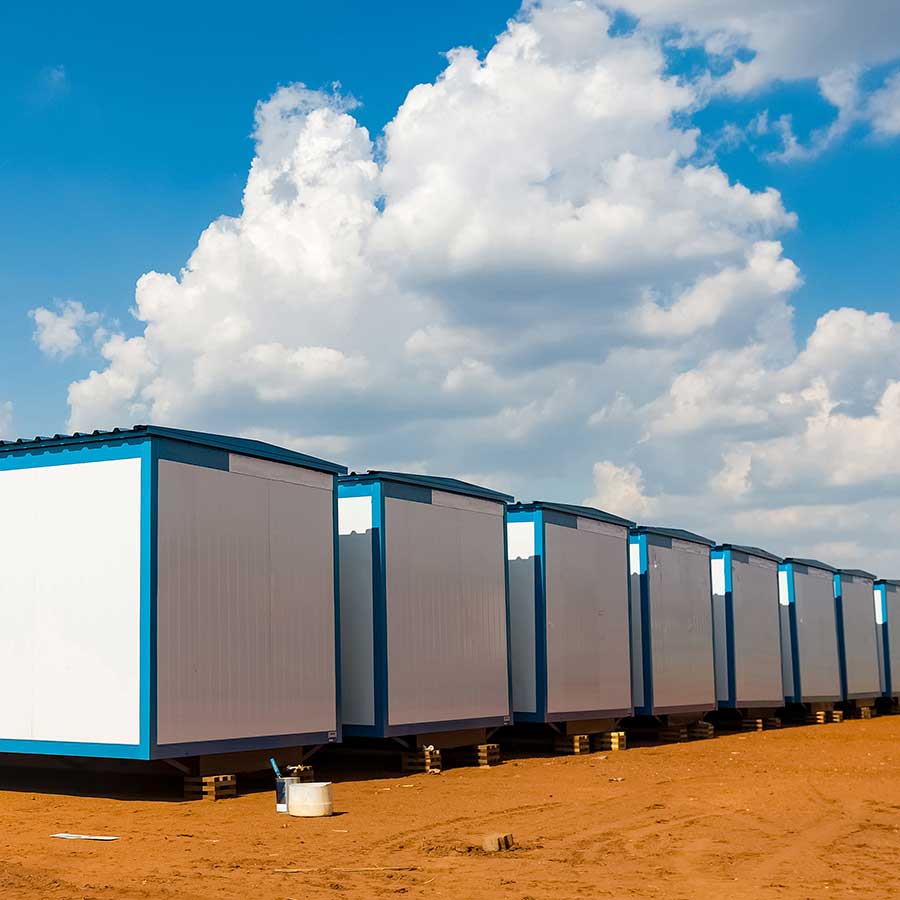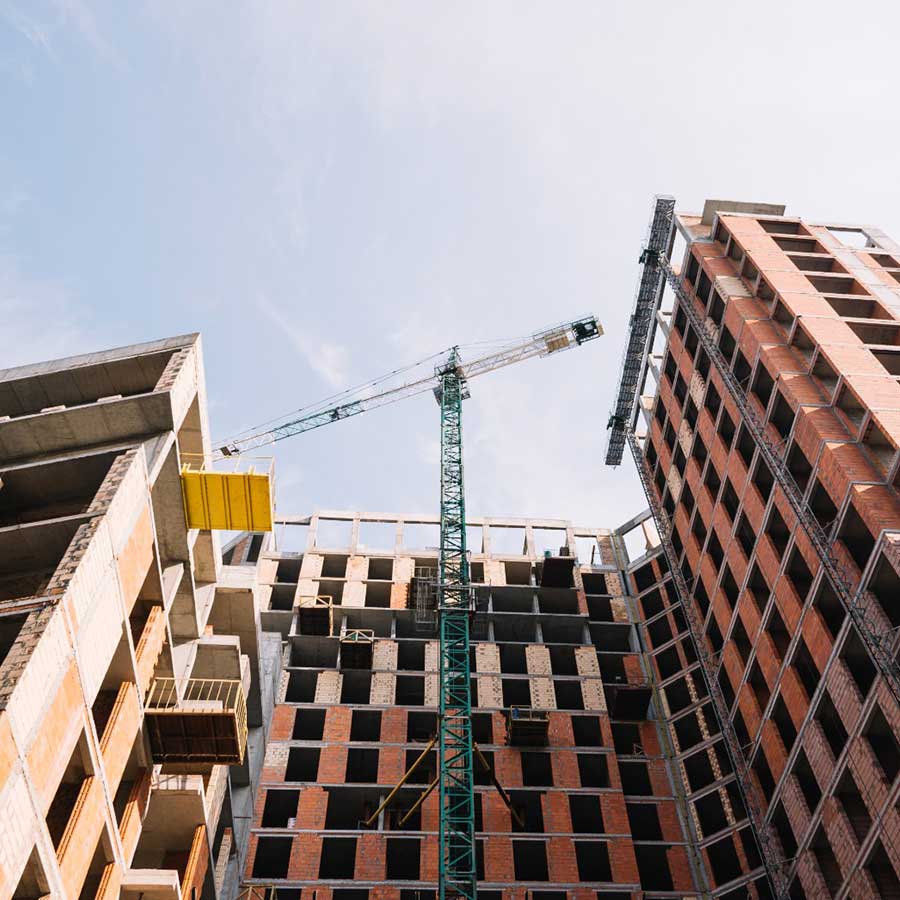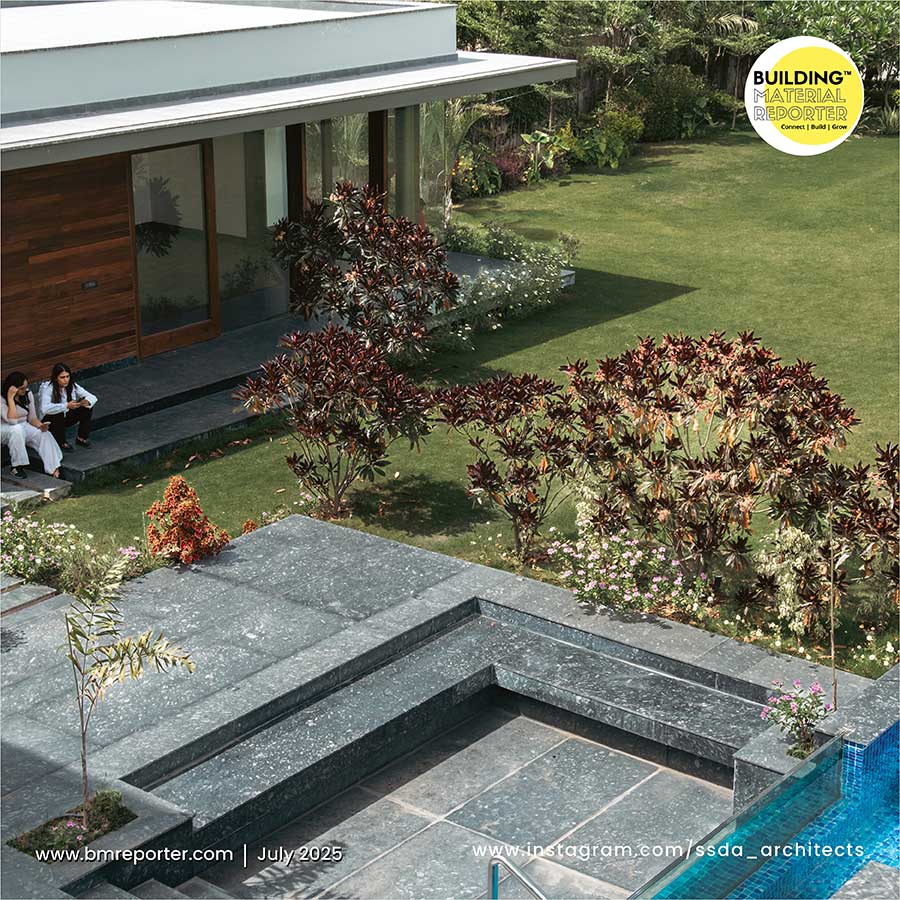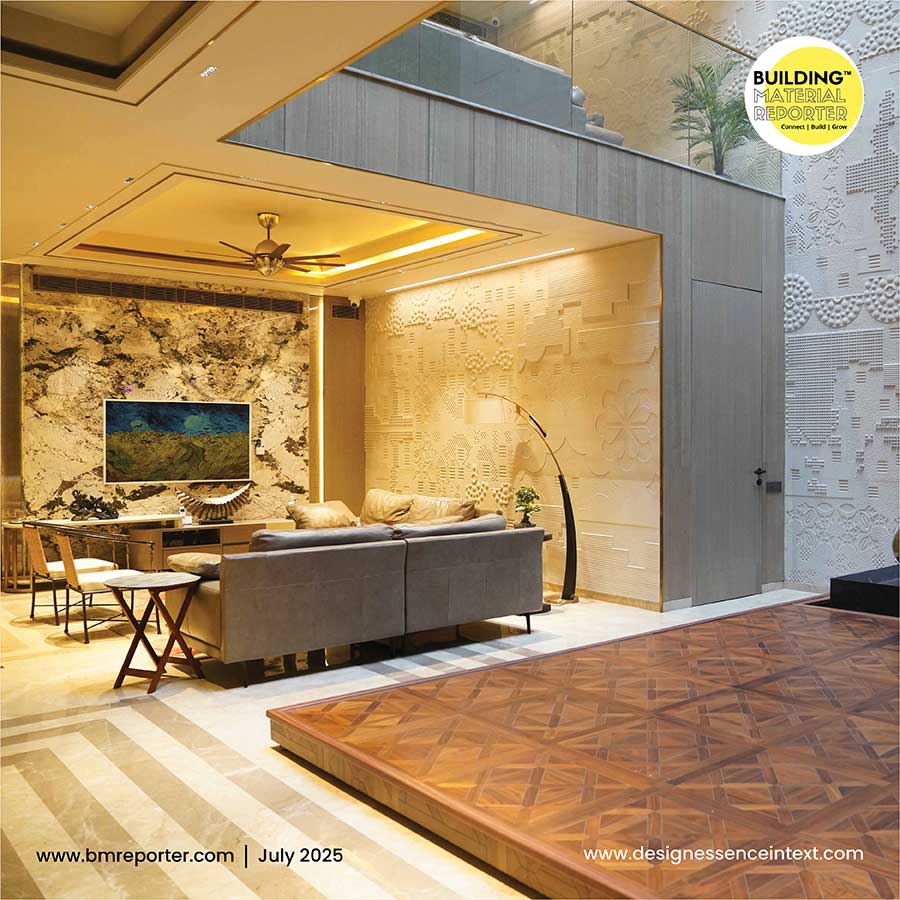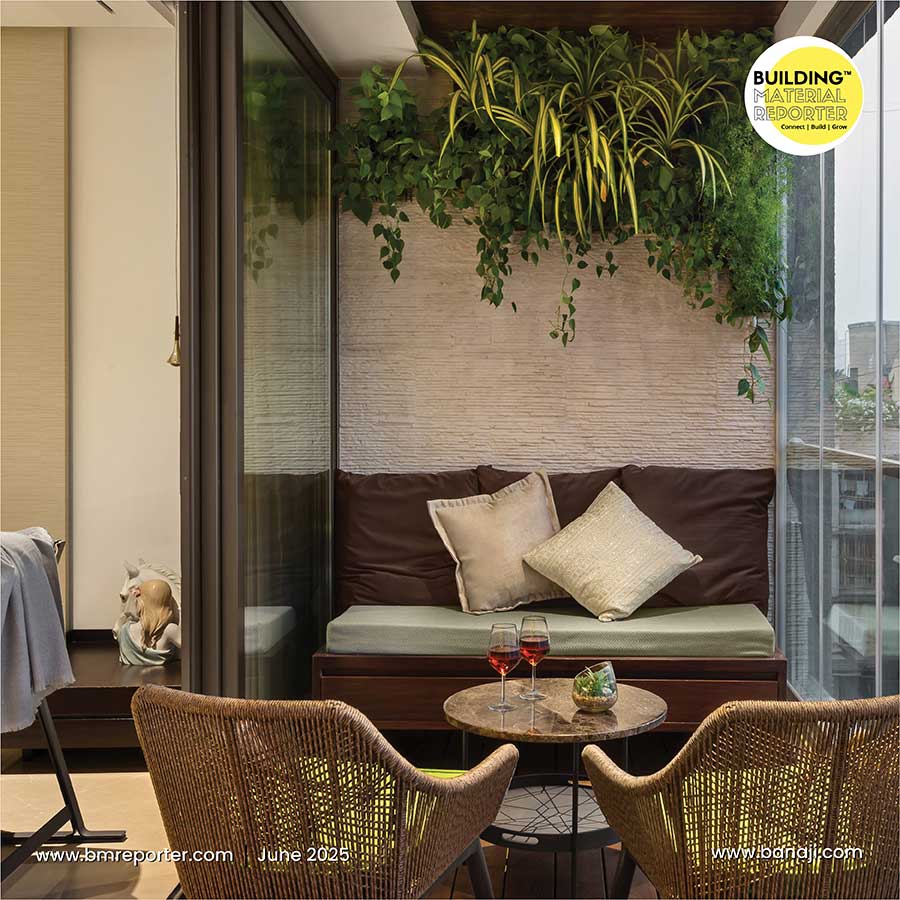The Psychology of Conscious Design: Creating a Mindful Cityscape
- October 9, 2024
- By: Ar. Priyanshi Shah
- INFLUENCERS
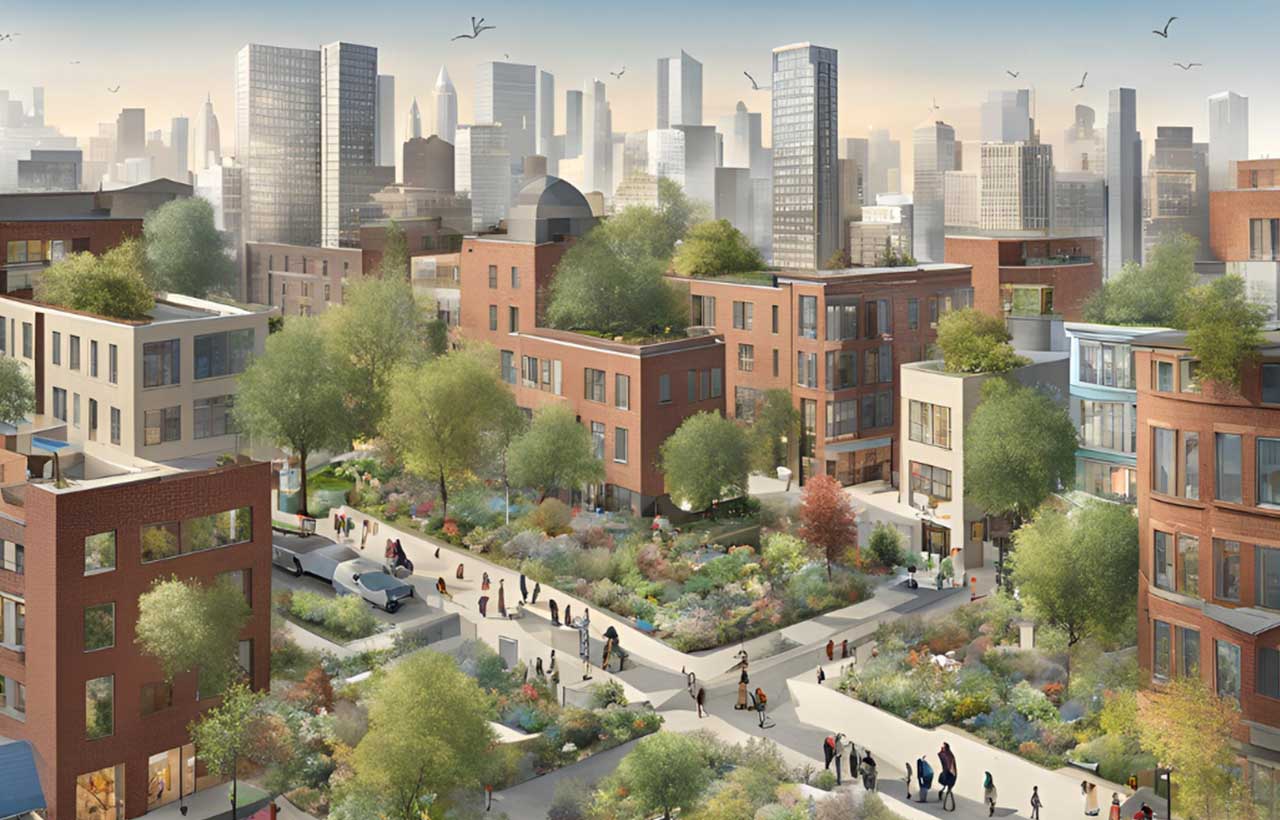
Introduction to Conscious Design in Urban Planning
Conscious Design in Urban Planning is a pragmatic approach to fostering sustainability, using eco-friendly and recycled construction materials, and well-being by incorporating sensory elements. As cities expand and evolve, conscious design in urban planning emerges as a holistic design solution. When we delve deeper, the idea of conscious Design in Urban Planning is to create mindful spaces and thrive in community engagement adopting construction innovation, future trends, and sustainable living to adapt to evolving challenges.
The Psychological Impact of Urban Environments
We are all unique due to the experiences and stories that shape who we are and our urbanscapes. Understanding our neurology through the lenses of psychiatrists, psychologists, and educators serves as a medium for fostering community participation and enabling experiences through observation, exploration, experimentation, and ingenuity as shared understandings. It is through the expression of our cultures, experiences, contexts and ideals that we are connected and collectively responsible for future development.
Conscious Design in Urban Planning
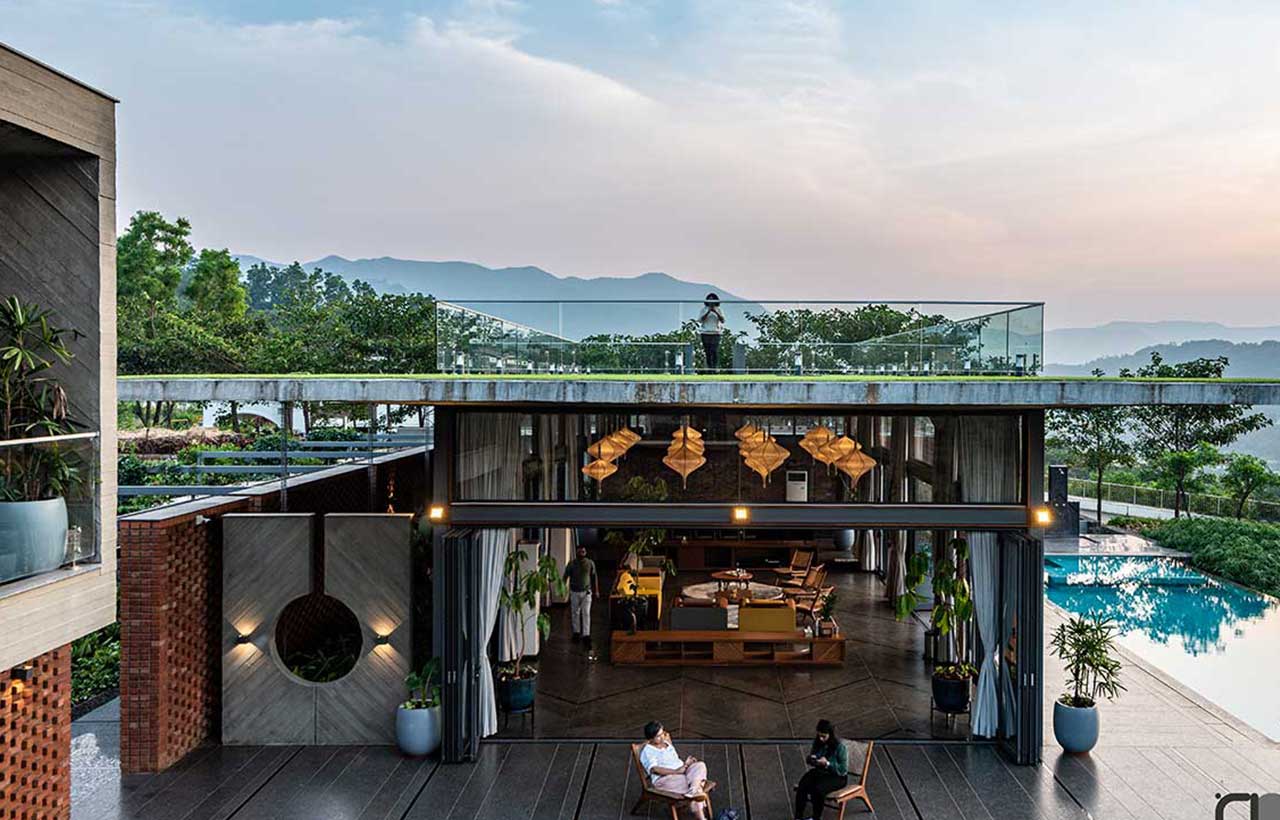 Space never exists in a vacuum; it is always bound up with its surroundings, inhabitants, and culture. Researchers have found that designing spaces with comfort and security using psychological theories and Neuroarchitecture results in human-centric environments. The effects of creation transcend human thought and persist as cosmological perceptions. When we create something, it begins with a feeling or a drive to give an idea the most tangible possible life. The mind is like a vibrant, sophisticated city, full of many intricacies and processes that support its overall health and functionality. A city requires a conscious design element of understanding to endure sustainable construction approaches.
Space never exists in a vacuum; it is always bound up with its surroundings, inhabitants, and culture. Researchers have found that designing spaces with comfort and security using psychological theories and Neuroarchitecture results in human-centric environments. The effects of creation transcend human thought and persist as cosmological perceptions. When we create something, it begins with a feeling or a drive to give an idea the most tangible possible life. The mind is like a vibrant, sophisticated city, full of many intricacies and processes that support its overall health and functionality. A city requires a conscious design element of understanding to endure sustainable construction approaches.
The Role of Green Spaces in Mindful Urban Design
Open spaces and green areas are essential for regeneration and relaxation in cities. Similar to physical health, mental health requires rest and breaks. A city's streets, roads, and public transit systems are analogous to the pathways that information travels through the mind. The movement of thoughts and ideas between various mental regions is facilitated by these channels. We are so accustomed to noise that we are continuously adapting to comprehend stillness, and we deeply cultivate our solitude to the point that we no longer value connections. Our minds are continuously adapting new information, and experiences, like a city continually growing and evolving.
Addressing the latest colour trends, and diverse green building innovation with eco-friendly approaches in construction technology, conscious designers can extend the lifespans of buildings and reduce pollution, creating a calmer surrounding that reflects the city’s commitment to innovation and sustainability.
Technological Innovations in Conscious Urban Design
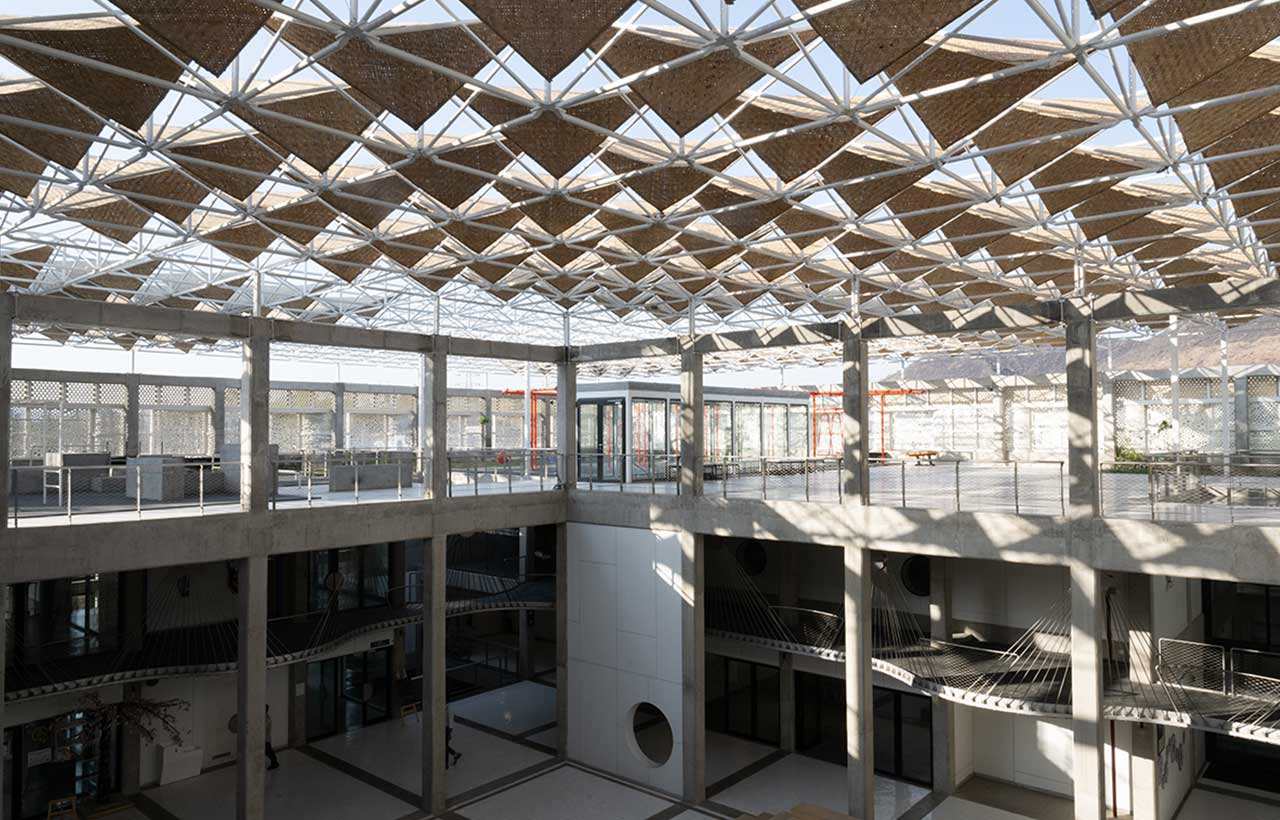 Technological innovations are being implemented today to foster sustainable construction materials, energy-efficient approaches and the use of recycled materials that support both environmental and mental well-being, paving the way for conscious design. Implementing technological advancements helps us fight climate change, and manage population growth, allowing cities to align with future trends in sustainable living with human-centric approaches.
Technological innovations are being implemented today to foster sustainable construction materials, energy-efficient approaches and the use of recycled materials that support both environmental and mental well-being, paving the way for conscious design. Implementing technological advancements helps us fight climate change, and manage population growth, allowing cities to align with future trends in sustainable living with human-centric approaches.
- Smart Adoption of Renewable Energy: A smart grid system in construction optimizes electricity distribution and integrates renewable energy. Community-level grids highlight construction technology to address environmental challenges.
- Internet of Things (IoT): This is one of the crucial aspects of conscious urban design—a city driven by data and choice based on it. With the help of IoT, cities can gain insights into traffic control, air quality, safety measures, and public resource management.
- Advanced Public Transportation Systems: To encourage human-centric designs and sustainability, cities should adopt the policy to reduce cars and chemical emissions and develop a design for green spaces and pathways to connect and interact.
Community Involvement in Creating Mindful Cityscapes
 Community plays an important role in creating the living environment. Built form is not an independent thing; it belongs to people and places. A sense of surprise, vistas of the surroundings, the dimensional play of activities, sustainable materials, and the architectural form's interaction with natural light are aspects of architecture. When inside and outside come together it results in a living environment. According to studies, our opinions and behaviours are impacted by our surroundings. Throughout the 21st century, we have been so distracted with form-making that we have overlooked about community needs and connectivity to the environment.
Community plays an important role in creating the living environment. Built form is not an independent thing; it belongs to people and places. A sense of surprise, vistas of the surroundings, the dimensional play of activities, sustainable materials, and the architectural form's interaction with natural light are aspects of architecture. When inside and outside come together it results in a living environment. According to studies, our opinions and behaviours are impacted by our surroundings. Throughout the 21st century, we have been so distracted with form-making that we have overlooked about community needs and connectivity to the environment.
Principles of Conscious Design: Integrating Mindfulness into Cityscapes
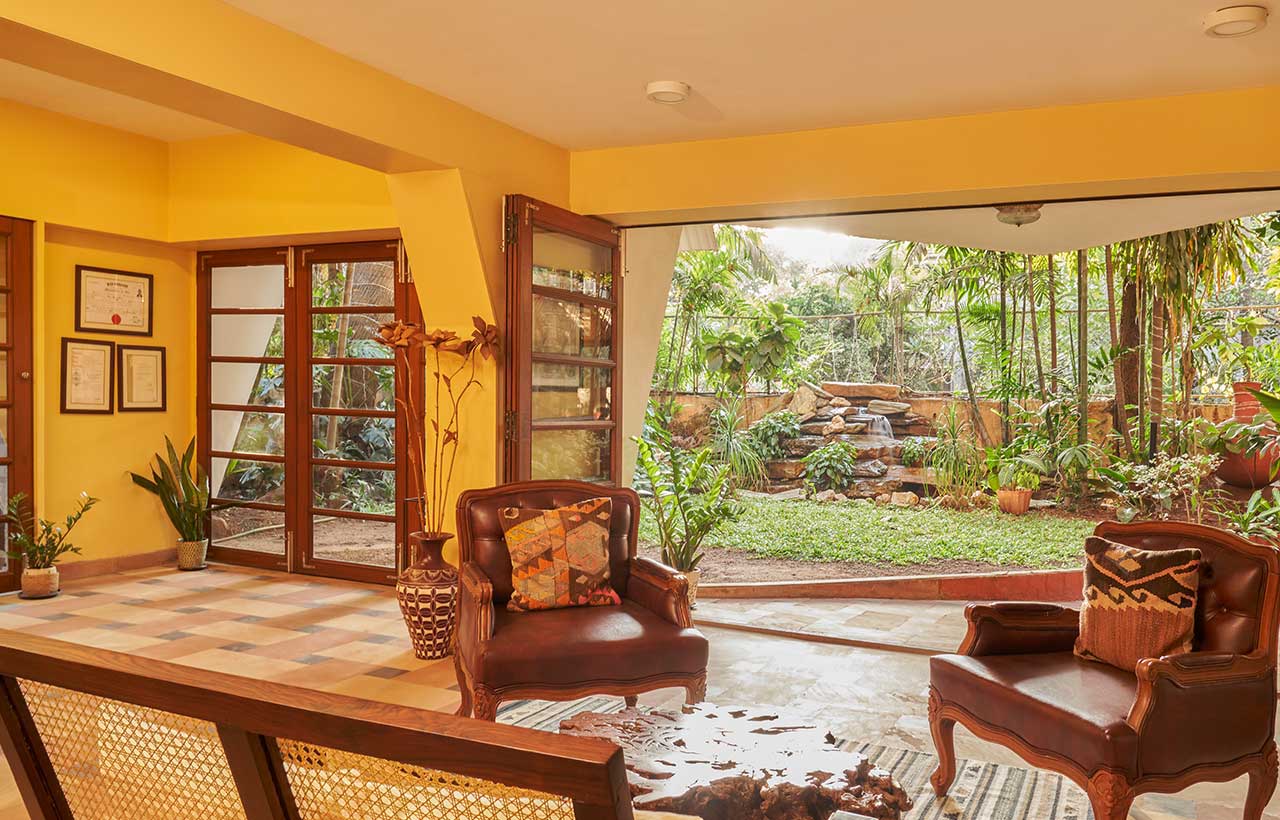
- Human - Centric design: We are reminded that everyone has a place and a purpose on Earth as part of our connection to the universe. The user's experience is determined in real-time by their trip through the pleasant spaces, the sensation of crossing them, and their knowledge of scale and proportion to the human body. A voyager's ability to perceive nature's elements as something eternal, rather than just as components, is a powerful way to convey a story.
- Sustainability and Resource Efficiency: Conscious design indicates the use of sustainable materials, and eco-friendly practices and reducing the consequences of pollution on built environments. Adopting green roofs, rainwater harvesting, smart waste management and energy-efficient measures creates a living city.
- Biophilic Design: A connection to nature improves mental and physical well-being, creating the ecological experience of living. Biophilic design elements such as urban forests, oxygen parks, green spaces, and rooftop gardens reduce stress and improve air quality. To resonate with the natural landscape, a conscious understanding of future trends and colour in architecture and interior design results in a relaxing experience.
- Accessibility: Future cities can be designed with sustainable materials, livable streets, and areas for people to encounter, creating the enchantment of green cities. Universal design adopting wheelchair access, braille signs, and child-friendly spaces fosters inclusivity. Considerate mixed-use spaces, residential, commercial and recreational activities cater to diverse needs and encourage community engagement.
- Mindfulness and Conscious City: Spaces that cater to senses should incorporate sensory elements such as water surfaces, nature, natural construction materials, and pleasing colours to engage sight, sound and touch. Spaces designed for meditation, relaxation and community engagement create a mindful and conscious city.
Challenges and Solutions in Implementing Conscious Design
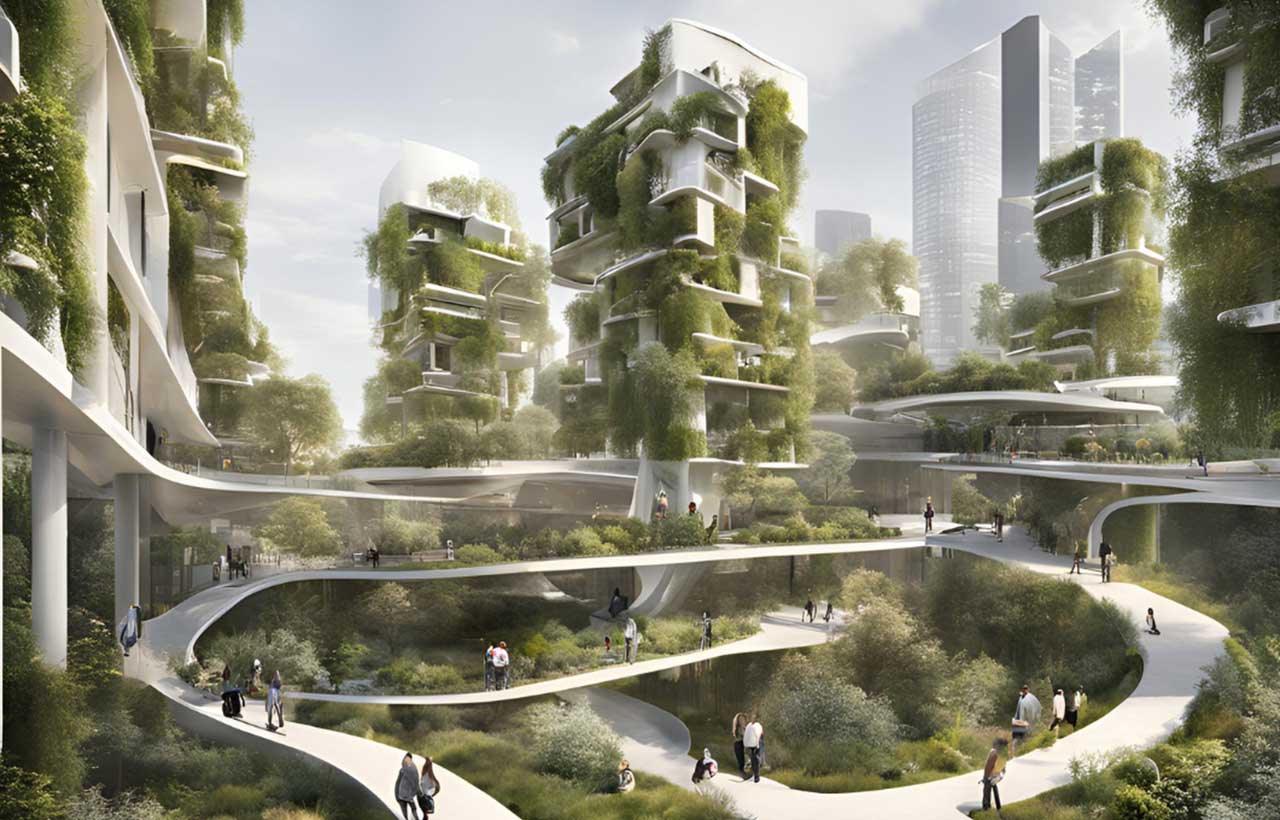
- High Cost - Incentive Programs: Urban cities require conscious choices to overcome challenges. Adopting sustainable materials and eco-friendly design approaches can be expensive. Therefore, it's important to adopt cost-effective and sustainable solutions, such as encouragement programs, community welfare programs, and bond switch government. Higher authorities can help to initiate measures for biophilic and eco-friendly design elements.
- Absence of Awareness - Education: Awareness of programs that boost understanding and support the design philosophy of construction innovation, and future trends in interior design is essential to sustain sustainable initiatives.
- Ornamentation - Thoughtful 3D Design implementation: Creating a design with eco-friendly approaches can seem challenging, as aesthetics are sometimes compromised. Futuristic technology such as 3D digital designs with colour trends and interior designs featuring biophilic characters can develop a cohesive and balanced design.
Conclusion: The Path Forward for Mindful Cityscapes
As a mindful Architect, I am troubled by the most fundamental question: Why should one be built when we know from facts and figures that doing so causes climate change, disrupts the environment, pollutes major cities, and damages the fabric of our minds by utilising more concrete (indoor spaces) and less natural scenery? Conscious design in urban planning illustrates the path forward for mindful cityscapes that are not just sustainable and energy efficient but also dynamic by integrating innovation with smart technology for people and places.
Frequently Asked Questions (FAQs)
What is conscious design, and how does it impact urban environments?
Conscious design in urban planning empasizes promoting sustainability, green technology, community engagement and the well-being of the user. The conscious design with an awareness of environmental, social and psychological aspects influences the built environment.
How can green spaces contribute to a mindful cityscape?
Green spaces in the built environment foster creativity, relaxation, and mindful activities. Inducong green elements reduce stress and create a sense of belonging with nature. Biophilic elements such as roof terraces, water elements, and green lush pockets in between built forms contribute to a mindful cityscape.
What are some examples of successful mindful city designs around the world?
Copenhagen, Denmark: Copenhagen prioritizes sustainable urban living with 60% of residents driving bikes reducing traffic congestion and emissions resulting in the development of parks, public spaces, urban wetlands and projects like Harbor Bath enhancing biodiversity for residents.
Vancouver, Canada: Following green building codes and energy efficiency standards with eco-friendly approaches for new construction developed as the plan of Greenest City 2020 Action promotes green spaces. Supporting local businesses, awareness about community engagement, recycling and composting initiatives contributes to a clear air and a pedestrian-friendly urban environment.



